PenHero 365: Parker True Blue No. 201
by Jim Mamoulides, January 30, 2010
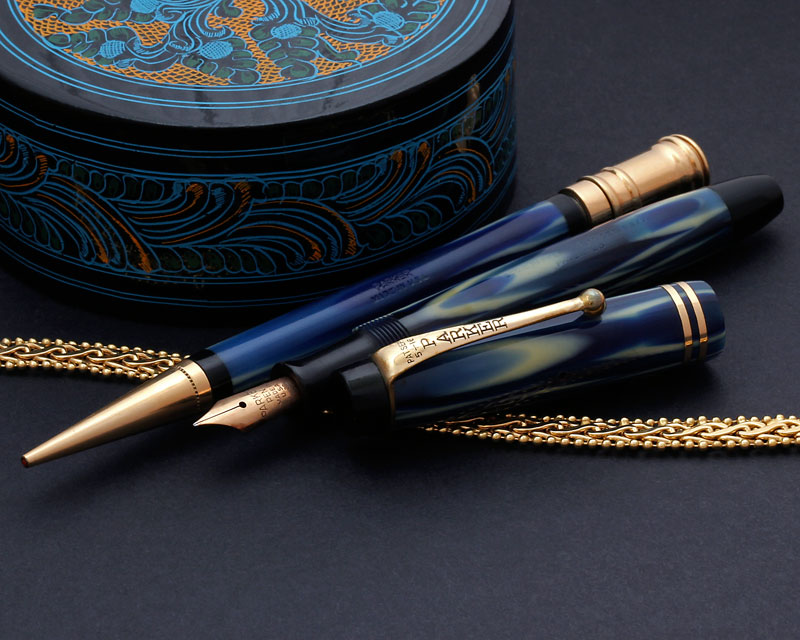
Parker True Blue No. 201 c1930 open with True Blue No. 702 ringtop pencil c1929
Parker introduced the vividly blue and cream swirled True Blue line in the 1929 catalog. Offered was a standard clip and ringtop fountain pen with matching pencils. Parker named the new color "Modernistic Blue" and the pen line was aimed squarely at the school market, a nearly full size yet slimmer Duofold-like pen for smaller hands and at half the price.
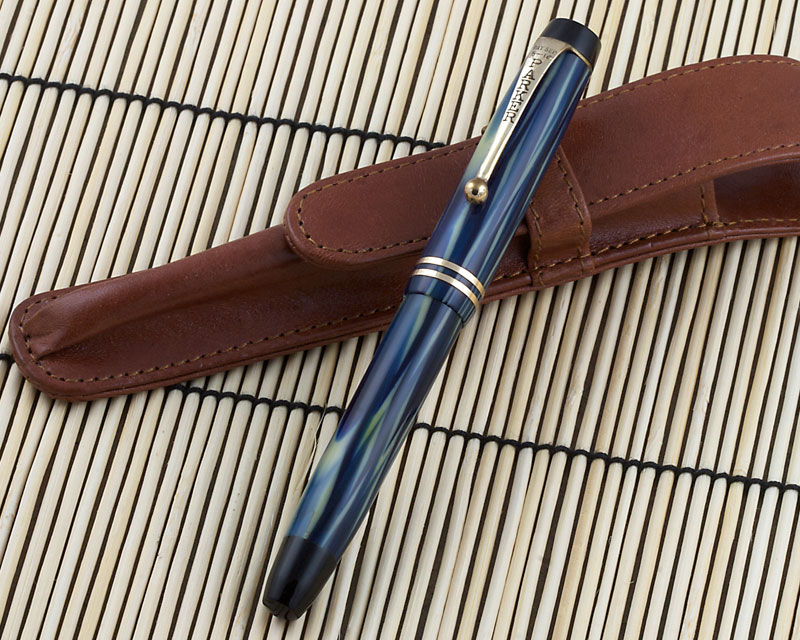
Parker True Blue No. 201 closed
Parker first called the new line the "Three-Fifty" pens, an indication of $3.50 price for the pen (with the matching pencil selling for $3.00). Parker changed the name to True Blue in the 1930 catalog, and as with the rest of the Parker line, the pen was given a new streamlined shape, Parker's answer to the Sheaffer Balance, and Parker added a shorter clipped pen to the line, the No. 201 Junior size pen shown here.
Parker supported the new pen with advertising, though the author has only found a few examples of advertisements from 1929 and 1930, and a dealer ad example in the June, 1931 Parkergram. Parker obviously spent most of their marketing budget supporting the higher priced and more profitable Duofold line. The True Blue does not appear in the 1932 catalog, indicating that the line probably ran from 1929 through 1931.
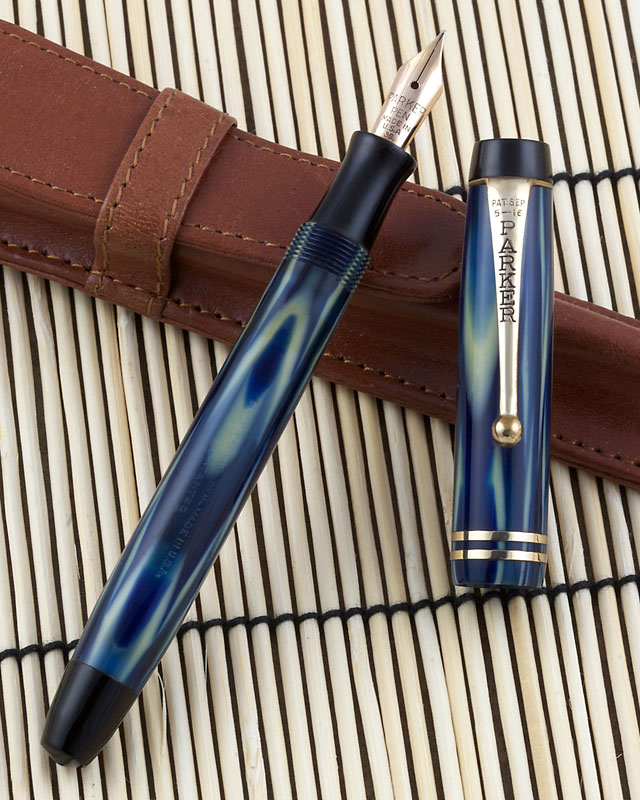
Parker True Blue No. 201 open
This Parker True Blue model No. 201 is a very petite and light weight pen, weighing 0.5 ounce and being 4 9/16 inches long with the cap on and 5 5/8 inches with the cap posted on the end of the barrel. The Parker True Blue pens don't post very deeply and the cap feels like it could come off during writing, so I don't post it, which makes writing with this tiny pen a challenge. It's obviously meant for small hands.
The True Blue uses Parker's button filling system, which was introduced in 1916. The advantage of the system is that the pen barrel is unbroken, with no lever or other device to snag clothes and pockets. The disadvantage is that there is a blind cap to lose, and pens can be found in the field without them. The button filling system is very simple to use. The process is straightforward: remove the blind cap from the bottom of the barrel, dip the nib in ink, press the button once, count to ten, and remove the nib and wipe.
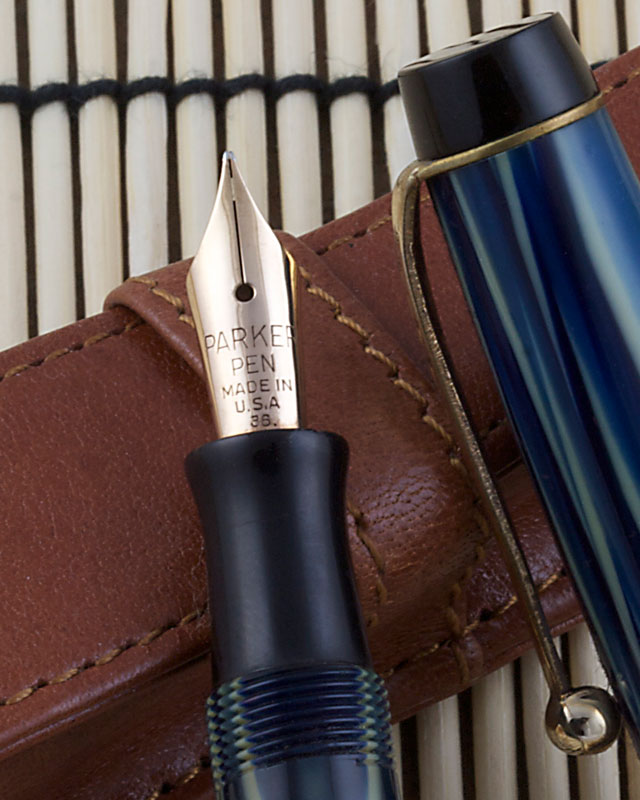
Parker True Blue No. 201 nib and cap detail
This True Blue is fitted with what looks like a number 3 nib, but catalogs images show them with number 2 size nibs. In either case, these are smaller and more flexible nibs than appear on the full size Duofold pens. Parker offered six nib styles: extra fine, fine, medium, broad, stub, and oblique. This pen is fitted with a semi-flexible fine, and puts a nice wet line on paper. The nib is not quite as glassy smooth as the nibs I've tried on the full size Duofold, but it is a nice writer.
An interesting variation with this pen is the more bullet shaped blind cap. The 1930 catalog and almost all other examples I have seen have a flat bottomed blind cap. This may be a cap swap from another pen or a very late model.
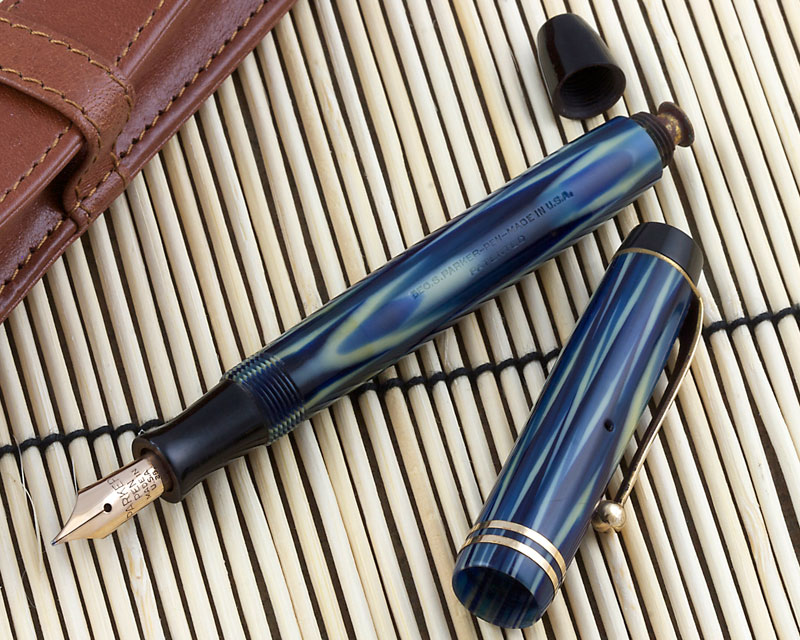
Parker True Blue No. 201 open with blind cap removed showing filling button, note imprint on barrel
The Parker True Blue is fancied by many collectors principally because of the vivid blue swirled color. Many of these pens suffer from discoloration due to the sulfur in the ink sacs leeching out, so finding one with really nice color is not only a bonus, but increases the pen's value. Collectors will often seek at least one of the pencils in order to gauge the color of the pen, as the pencils do not as easily discolor. As with all Parker pens from this era, many will suffer from plating loss on the clip at the wear points, in particular the ball tip. Although this material is not as prone to cracking as other Parkers from this period, be careful of cracks in the cap at the lip from hard posting. Since there are only nine pens and pencils to be had to complete a collection and the pens and pencils are not rare, one could relatively easily have a very nice collection of True Blues, though the condition will impact the cost and value a great deal.
Discuss / Recommend what you read on PenHero.com
Follow us on Twitter: PenHero
Add a link to PenHero.com on your blog:
(Copy & paste code)
Please only use the photo provided. Use of other photos requires permission.
The provided link photo will change as we update the site.
Comments on this article may be sent
to the author, Jim Mamoulides
PenHero.com Bibliography
